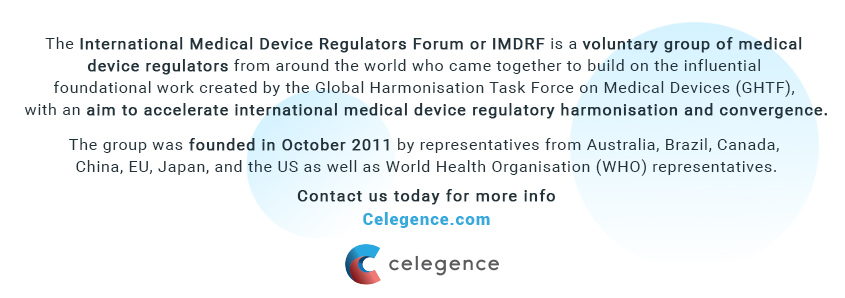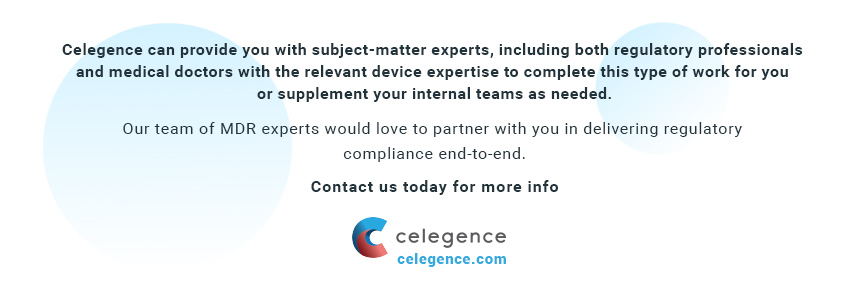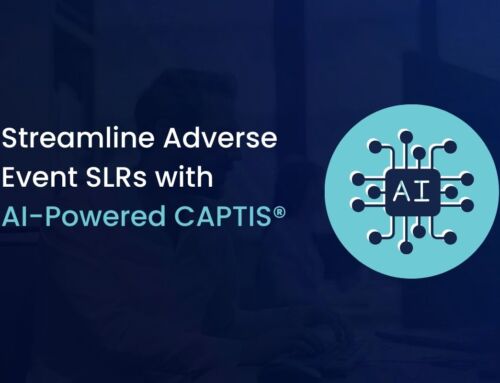
International Medical Device Regulators Forum (IMDRF) & Summary of Recent Changes to Clinical Evaluation Guidance
This article aims to help manufacturers understand how the International Medical Device Regulators Forum (IMDRF) can assist you in designing compliant regulatory strategies, and how to access the extensive catalogue of guidance documents. The following is the eighth blog in the series related to the recent and impending updates to EU MDR 2017/745. In this blog, we will provide useful insights on some key topics and latest updates from the IMDRF.
To learn more about the EU MDR changes you can view some of the previous posts in the series:
- Medical Device Equivalence vs Demonstration of Equivalence
- Post-market Clinical Follow-up Requirements for EU MDR
- The New European Union MDR: Impact on Technical Files
- Low-risk Device Challenges
- Selecting and Working with your Notified Body
- Medical Devices with Ancillary Medicinal Substances
- Regulatory Challenges Writing EU MDR Compliant Clinical Evaluation Reports (CER)

Claim Your Free EU MDR Checklist Now!
Make sure you and your business are compliant with the new EU MDR. Get our 23 page checklist for actionable technical documentation requirements.
Who are the IMDRF?
The International Medical Device Regulators Forum or IMDRF is a voluntary group of medical device regulators from around the world who came together to build on the influential foundational work created by the Global Harmonisation Task Force on Medical Devices (GHTF), with an aim to accelerate international medical device regulatory harmonisation and convergence.
The group was founded in October 2011 by representatives from Australia, Brazil, Canada, China, EU, Japan, and the US as well as World Health Organisation (WHO) representatives. The purpose of this group is to provide a forum for members to deliberate and provide state of the art (SOTA) guidance on strategies, policies, and direction. The group works with other stakeholders such as industry Subject Matter Experts (SMEs), academia, healthcare professionals, and consumer and patient groups. The IMDRF sets up working groups that are responsible for collaborating on a variety of topics and developing technical documentation for the industry. A list of the current/closed work items is available here.
Differences Between IMDRF and GHTF
GHTF was also a voluntary group of representatives of global regulatory authorities from the US, EU, Canada, Japan and Australia that were divided into three regions, Europe, Asia-Pacific and North America. It was disbanded in late 2012, and the IMDRF appropriated the work undertaken by GHTF. Although they share the same goal of harmonising the regulatory landscape across the world, the difference lies in the constitution of the working groups − GHTF was primarily made up of regulators and industry, while IMDRF involves many other key stakeholders, and works much more collaboratively than GHTF. Among others, the five key study groups of IMDRF focus on: Regulatory Systems, Vigilance, Quality Systems, Auditing Practices, and Clinical Practices.

IMDRF – Recent Decisions and Work Items
The IMDRF publishes documents that are open to members of the public to review and provide comments on the text. A date for the completion of the consultation period is printed on the consultation document, along with an email address to share comments addressed to the group. Should you want to add comments to any of the consultation documents issued, you will need to complete the comments template, that you can find on the IMDRF website. Some of the recent consultation documents published by IMDRF are ‘Competence and Training Requirements for Regulatory Assessors’, ‘Principles of IVD classification’ and ‘Regulatory Authority Assessment Method for Recognition and Surveillance of MD Conformity Assessment Bodies’. The documents are easy to follow and assist in interpreting the regulatory requirements with ease.
Clinical Evaluation Working Group of IMDRF – Final Guidance
The Clinical Evaluation Working Group of IMDRF issued a final guidance relating to clinical investigations, clinical evaluation, and key definitions relating to clinical evidence in October 2019 (IMDRF MDCE WG/N56FINAL:2019). This document supersedes the guidance document published by GHTF (GHTF/SG5/N2R8:2007). Together with the MEDDEV 2.7/1 rev 4 guidelines, the IMDRF guidance document provides detailed and easy to follow guidance on how to fulfil the requirements stipulated in MDR 2017/745.
Some key topics from the Clinical Evaluation guidance document are discussed below.
Key Topics from the Clinical Evaluation Guidance Document
- Overview of Clinical Evaluation
The structure of the document walks you through the basics, covering topics such as “what is a clinical evaluation”, “why is a clinical evaluation important”, and “what is the clinical evaluation process”. It has detailed flow charts outlining “the stages of a clinical evaluation”. Software as a Medical Device and In-vitro Diagnostic Devices (IVDs) are specifically addressed. The document also provides guidance on how to effectively build literature searching strategies, how to use other clinical data, such as clinical investigations. It advises how to appraise/analyse the clinical data correctly and what should be detailed in the CER report. A list of considerations for comparability of devices and a suggested format for a Literature Search Report are provided as Appendices to the Guidance Document.
- Frequency of Updates to the Clinical Evaluation Report (CER)
The IMDRF document states that the CER should be updated periodically. This frequency should be laid out in the clinical evaluation plan if you look at other guidance documents, e.g. MEDDEV 2.7.1 Rev4. It is expected that the CER should be ‘actively’ updated at least annually for high risk or new devices, and every 2 to 5 years for lower risk, well-established devices. A justification for the frequency of updates will be required. For all risk classifications of devices, the CER will need to be updated whenever new information from the Post Market Surveillance (PMS) affects the evaluation or its conclusions, the data from the risk management system should link into the CER making it an iterative process feeding back to the labelling, if necessary.
- Qualifications of Report Authors and Evaluators
Section 5.0 General principals provide information relating specific requirements for the expertise and experience of CER authors and evaluators, “the clinical evaluation should be conducted by a suitably qualified individual or individuals. A manufacturer must be able to justify the choice of the evaluator(s) through reference to qualifications and documented experience” typically this would include a relevant higher education degree and five years’ related professional experience, or ten years’ professional experience if a degree is not considered a prerequisite for the task. Deviations from these requirements should be documented and duly justified. All evaluators must now make a declaration of interest, that should be appended to the final clinical evaluation report.
- Equivalence
The criteria (clinical, technological, biological) are unchanged, but more information on how this should be documented and factors which could affect the demonstration of equivalence are provided. In particular, requires that design differences and their impacts on clinical safety and performance be described in detail, that comparative drawings and diagrams should be provided, and that each device with which equivalence is claimed must meet all three equivalence criteria. It may be necessary to undertake further testing to support equivalence.
- The Scientific Validity of Data
Section 6.1 Identifies the datasets that are the most important in contributing to the demonstration of the overall performance of the medical device and, particular performance characteristics. It outlines why they are considered to be pivotal, and how they demonstrate the performance of the medical device collectively (e.g. consistency of results, statistical significance, the clinical significance of effects) with greater emphasis on demonstrating the scientific validity of data, including statistical considerations. Manufacturers need to address factors which can affect the scientific validity of different types of datasets. Besides, clarifying and explaining critical details throughout the document for each stage of the clinical evaluation process: factors which could affect the completeness, objectivity or weight of data should be described, including literature search and retrieval methods, identify the datasets that are considered to be the most important in contributing to the demonstration of the overall performance of the medical device and, where useful, particular performance characteristics.
- Access to Data for Equivalent Devices
MEDDDEV 2.7.1 rev4 also requires that the Notified Body challenge the manufacturer’s access to data on the equivalent device(s) (Appendix A12.2.3); this is considered a transition point for the Regulation, which will require a manufacturer to have a contract in place allowing access to data for competitor devices with which equivalence is claimed.
- Risk-benefit Analysis
The evaluation and quantification of benefits and risks and the assessment of the overall risk-benefit profile. The value of post-market data, and factors which could affect the statistical validity of the evaluation of this data, are addressed in some detail. The guidance eludes to the fact that the overall goal of the analysis stage is to make a benefit/risk determination if the appraised data sets available for a medical device collectively demonstrate the safety, clinical performance and effectiveness of the device in relation to its intended use.
- Post Market Surveillance (PMS) and Post Market Clinical Follow-up (PMCF)
Throughout this guidance, it repeatedly states the links between clinical evaluations, PMS is reinforced. To ensure that post-market activities, manufacturers are expected to implement and maintain surveillance programs that routinely monitor the safety, clinical performance and effectiveness of the medical device as part of their Quality Management System. For more info see the PMCF Requirements for EU MDR.

Claim Your Free EU MDR Checklist Now!
Make sure you and your business are compliant with the new EU MDR. Get our 23 page checklist for actionable technical documentation requirements.

Changes to IMDRF Clinical Evaluation Guidance – Conclusion
The IMDRF website provides a repository of technical information to help manufacturers build effective regulatory strategies. The resources have been compiled by regulators and industry experts and serve to provide useful pragmatic guidance documents that help to interpret the regulations/directives. These documents should be used in combination with other guidance documents, e.g. MEDDEVs. They are designed to complement one another. When developing regulatory strategies, manufacturers should always consult the IMDRF website and check for the latest updates.


